The light-flooded, rectangular room nestles within a frame of orange girders, hanging suspended amid pine trees over a steep incline. The effect is of a strange, surreal beauty, like a UFO taking off across the valley or a window looking on to eternity.
The small art gallery, one of five exhibition spaces on the grounds of Château La Coste, was a last creation by Richard Rogers, the great British architect who died last December. An immigrant from Italy, Rogers won the Pritzker Prize, the so-called Nobel of architecture, and was knighted by Queen Elizabeth. Bright orange was his favourite colour, external tubing his design signature.
Rogers was a close friend of Paddy McKillen, the owner of the 600-acre domain near Aix-en-Provence where the gallery is located. It is a unique feat of engineering, McKillen says, “the longest cantilevered structure in the world. Outside the Pompidou Centre [in Paris] and the Lloyd’s Building [in London], this could be Richard’s best work, and it’s tiny. It’s only when you go underneath and see it soaring off the hillside that you realise those cables are holding it up”.
He wanted to please and not disappoint me ... And he has created the best. But it took him 10 years
McKillen first met Rogers and other famous artists and architects when he hired them to work on Claridge’s, the Connaught and Berkeley hotels in London. Rogers was “a magnificent man,” McKillen says. “Richard and [his wife] Ruthie. We went on holidays together. We had amazing times down here.
READ MORE
“I would often ask him over dinner, ‘Richard, have you any ideas for me? You’re one of the last of our pals to come up with an idea’ and he said, ‘Paddy, I’m sort of frightened. I want to do the right thing for you’. He said creating a small space can be the most difficult thing ever, more difficult than a major office building.
“He wanted to please and not disappoint me ... And he has created the best. But it took him 10 years,” McKillen says.
The 67-year-old, Belfast-born hotel magnate has in two decades transformed Château La Coste into an extraordinary combination of winery, family homestead, luxury hotel and a vast sculpture and architectural park set among vineyards, lavender fields and pine forests.
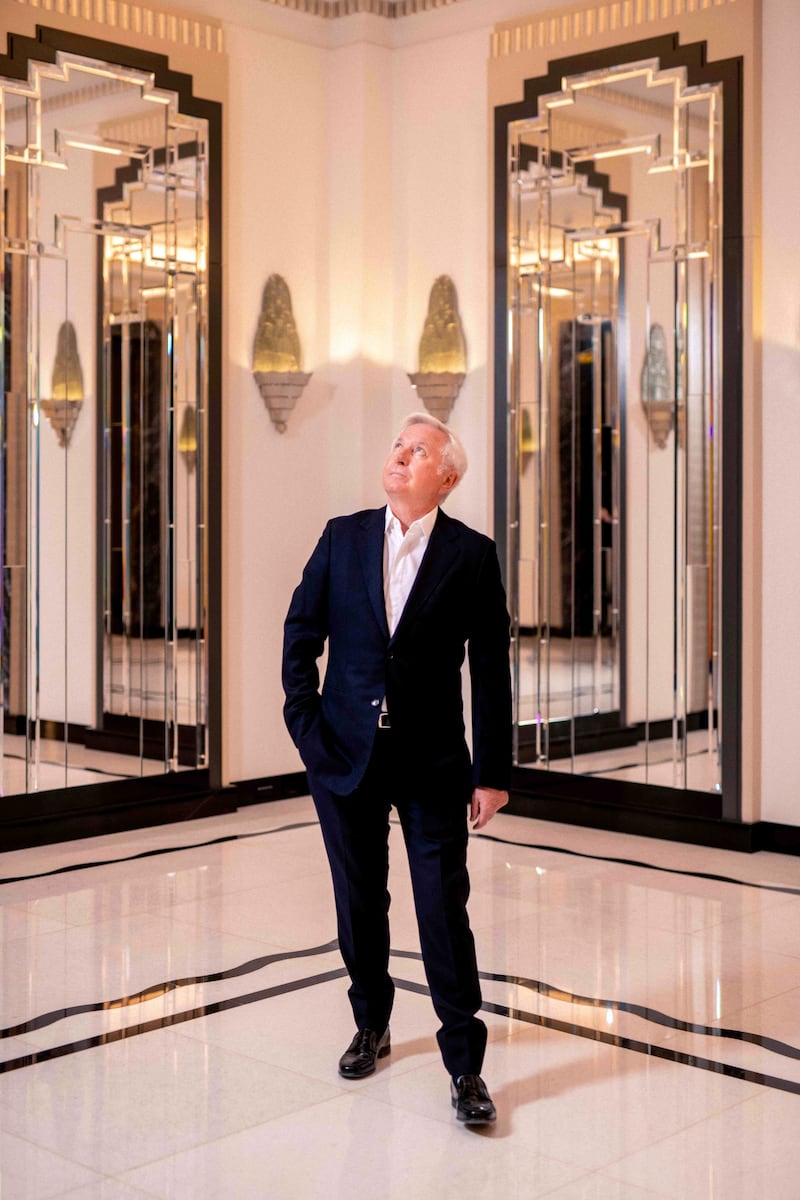
The name Château La Coste appears on the labels of hundreds of thousands of bottles of wine each year, but there is no actual château, just an elegant 17th-century bastide or lodge, and the Villa La Coste, a hotel of stunning comfort and refinement, slipped unobtrusively on to the hillside.
Anyone may wander free of charge among more than 40 art and architectural sites scattered across the property. A daylong guided tour costs €15. Daniel Kennedy, the art director at Château La Coste, organises new shows for the five galleries every three to four months. “This man runs more exhibitions than the Tate, the Pompidou and MOMA together!” McKillen boasts.
McKillen is recovering from a torn Achilles tendon. He wears a moon boot and drives me around the property in a golf cart. The project remains a work in progress, with at least seven construction sites under way, including pieces by Norman Foster and Paulo Mendes da Rocha, bringing to eight the number of Pritzker Prize-winners whose work is featured at the property.
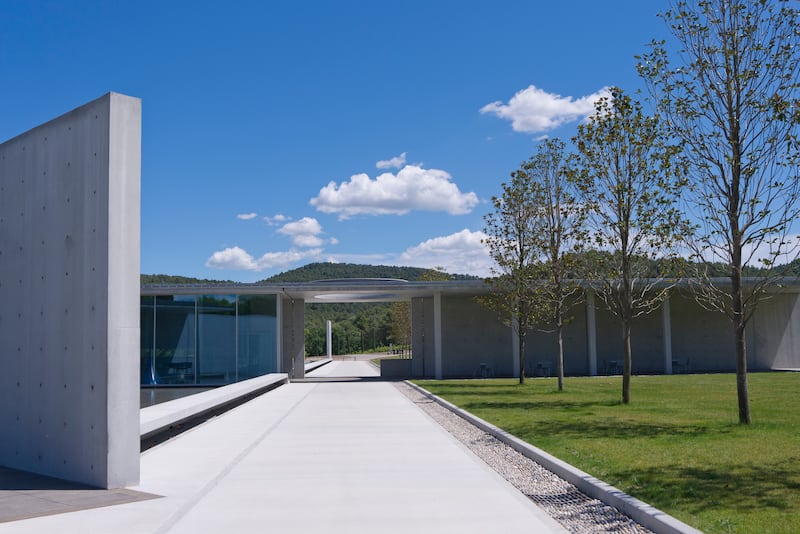
He is building a more affordable hotel in the village adjacent to the Art Centre designed by the Japanese architect Tadao Ando and the giant, shiny barrel-like warehouses that the French architect Jean Nouvel created to house the winery. The new hotel will open next year, with rooms priced at €200 a night.
One of McKillen’s fondest memories is of a lunch with Rogers and the Italian architect Renzo Piano, who designed the Pompidou Centre with Rogers.
The lunch took place at Georges, the rooftop restaurant at the Pompidou. “Renzo and Richard were like brothers,” McKillen says. “Renzo always wears a jumper, and he has four pens under that green jumper. Within minutes the pens come out and they are sketching on the same napkin and they’re fighting over it. You are sitting there with two giants and they are scribbling in front of you and playing with this amazing design.” McKillen kept the napkin.
We wanted everything to sort of live and breathe with the vines and the landscape. We didn’t want anything brutal or ugly
He confesses to being a frustrated architect himself and though he is too modest to say so, he contributes significantly to the designs. He travelled with artist Sean Scully to Portugal to help choose coloured stones for Scully’s Wall of Light Cubed, reminiscent of a Neolithic monument.
McKillen enthusiastically approved a proposal by the Chinese dissident artist Ai Weiwei to build a modern pathway linking two Roman roads at Château La Coste. Minutes later, an antiques dealer in Marseilles called to offer ancient cobblestones that were being excavated from the port there. “I rang Wei back and told him immigrants from Africa arrived on those cobblestones. He said, ‘My whole project is about migrants’!” Wei had earlier completed a photographic project commemorating the drowning of three-year-old Alan Kurdi, a refugee from Syria, on a beach in Turkey.
McKillen convinced Rogers to put a balcony on his gallery, “because from here you can see eight of his best friends,” he says. “You can see works by Renzo, who was his partner, Norman Foster, who was his partner, Oscar Niemeyer, whom he admired greatly, Frank Gehry, Ando and John Lavelle, who were his best friends. That balcony is the only place on the entire property where you can see them all. When Richard realised that, he said, ‘Okay, you win, Paddy’.”
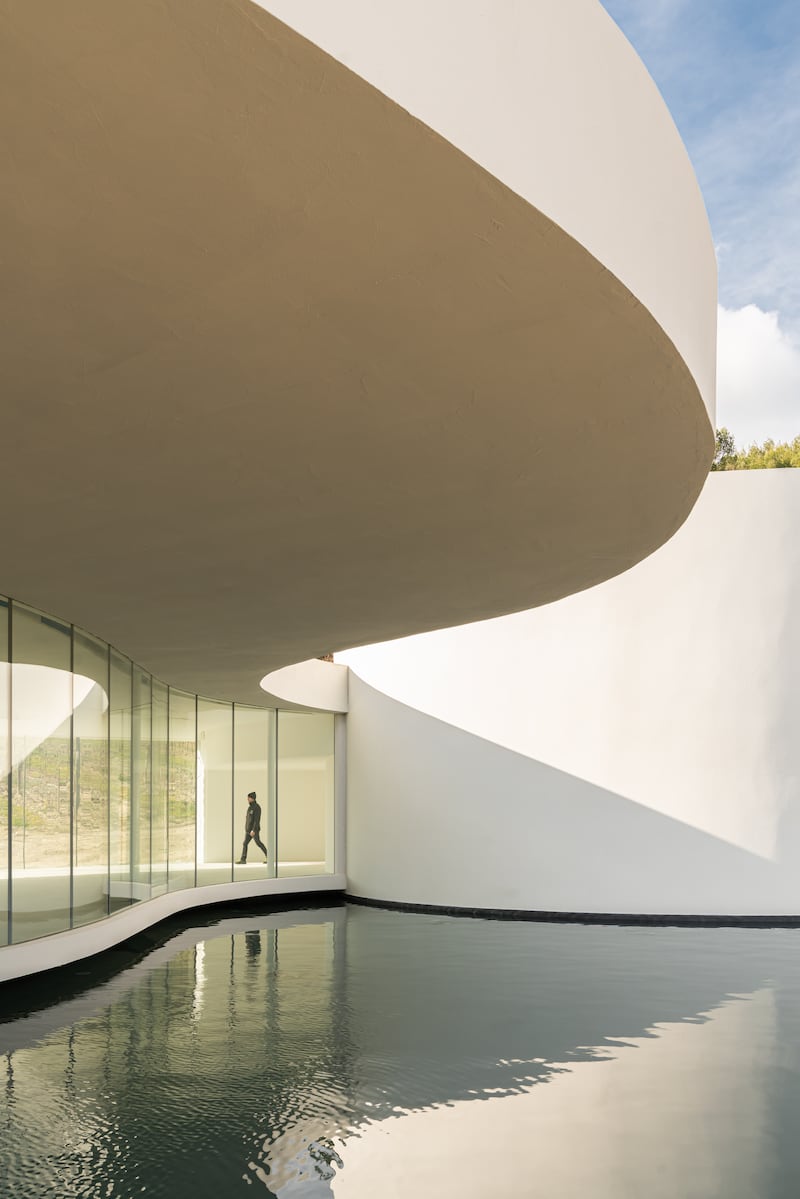
Renzo Piano’s pavilion, completed in 2017, looks like a line of white sails, a regatta sunken into the vineyards below us. One approaches the underground exhibition space through a long stone path. Bob Dylan was exhibiting his brightly coloured, French-influenced paintings when I visited. Dylan has also welded a permanent sculpture of a decorative railway boxcar up the hill.
“Renzo is very humble,” Mc Killen says. “He didn’t want a big structure coming out of the ground. He wanted something level with the vines and in line with the vines.” That is McKillen’s philosophy for the entire property. “We wanted everything to sort of live and breathe with the vines and the landscape. We didn’t want anything brutal or ugly.”
Niemeyer’s tear-shaped pavilion with a cylindrical auditorium and water feature opened in September, with an exhibition of sculpture and paintings by the London artist Annie Morris.
We had multiple meetings in her home in New York and we just fell in love
“Oscar handed me the finished drawings of this piece two days before his 105th birthday in Rio de Janeiro, and he died two days later,” McKillen says. The Brazilian architect likened the soft, curving forms of his designs to a woman’s body. Like Piano’s pavilion, Niemeyer’s is infused with the light of Provence and set among vines which seem to run horizontally through it.
With five structures on the property and a sixth in progress, Ando is the architect most represented at Château La Coste. In the tradition of Frank Lloyd Wright, he uses concrete, simple lines, apertures and water to create a Zen atmosphere. His Art Centre sits in a pool of water, flanked by a stabile by Alexander Calder and Louise Bourgeois’s giant Crouching Spider.
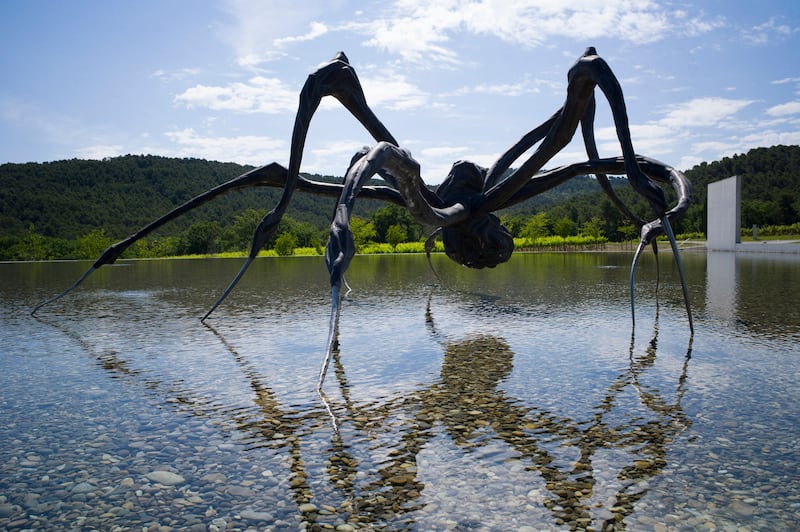
McKillen creates an irresistible environment for the artists and architects he invites to Provence. “Whenever I visit the vineyard, we have party-like lunches with people of diverse nationalities, professions and ages,” Ando writes in his forward to the book Château La Coste, Art and Architecture in Provence. “Assortments of wine and regional cuisine line a long table, where titans of art, architecture and music gather to enjoy one another’s company.”
McKillen holds the French-born sculptor Louise Bourgeois in special reverence. She married an American art historian and died in New York in 2010 at the age of 99.
“I loved Louise the first time I saw her Spider, maybe 30 years ago, in the São Paulo museum,” McKillen recalls. “It took my breath away.” He contacted her assistant and eventually met her. “We had multiple meetings in her home in New York and we just fell in love,” he says.
The spider is a repairer. If you bash into the web of a spider, she doesn’t get mad. She weaves and repairs it
Bourgeois initially refused to create a spider for Château La Coste because she wanted to sell only to museums. McKillen used two winning arguments: the sculpture would remain accessible to the public, and he would place it on water at an Art Centre to be designed by Ando. McKillen took an almost paternal interest in the sculpture’s making, repeatedly visiting the New Jersey foundry where it was cast.
Bourgeois’ parents mended tapestries for a living. She saw spiders as a reassuring metaphor and named one of her spiders, Mother. “I came from a family of repairers,” she explained. “The spider is a repairer. If you bash into the web of a spider, she doesn’t get mad. She weaves and repairs it.”
Another superb sculpture by Bourgeois, of a man and woman intertwined, hangs from the ceiling of the Louison restaurant (Louison is the diminutive of Louise) in the Villa La Coste hotel. The restaurant is run by Michelin-star chef Hélène Darroze, whom McKillen also recruited for the Connaught Hotel in London.
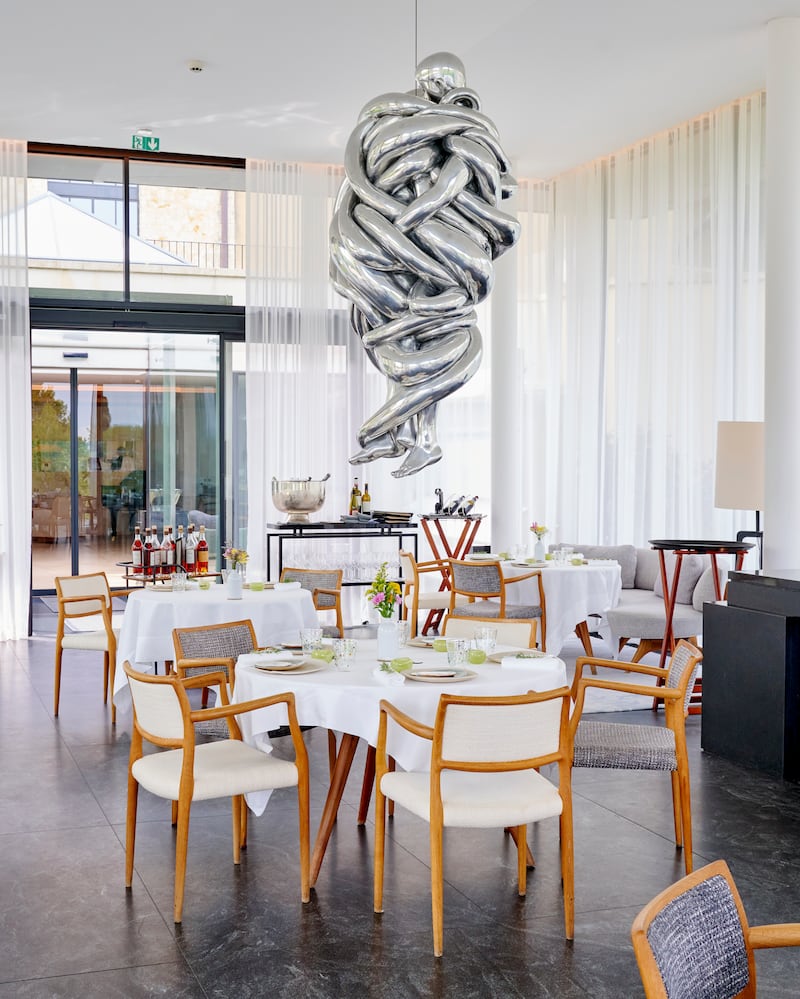
Red gouache paintings by Bourgeois hang behind the reception desk at the hotel. At first glance, they appear to show flowers or abstract shapes, reminiscent of Matisse’s cut-outs. On closer examination, they represent male and female sexual organs. Other works in the lobby include three sculptures by Damien Hirst, two drawings by Matisse, a Picasso mosaic, a Le Corbusier tapestry and paintings by Sean Scully.
McKillen purchased Bourgeois’ tapestries, bronze and glass works, before she died. Jean Nouvel, creator of the Institut du Monde Arabe in Paris and the Louvre Abu Dhabi, is now building an earthen-clad dome covered in vegetation — like the Musée du quai Branly which he also designed — to house three towers containing Bourgeois’s work.
McKillen loves challenging visual artists to take on architectural projects. On the morning of my visit, a digging machine breaks ground for a chapel by Hirst. It will be the fourth chapel on the property, set in a hollow in a pine forest.
Money is not my driver. I never wanted to be called a wealthy person
Hirst once encrusted a skull with 8,601 diamonds, called it For the Love of God and set a £50 million price tag on it. He showed a lamb, cow and calf preserved in formaldehyde at the Tate Gallery in London. More recent works, including stained glass-like compositions made from butterflies and paintings of cherry trees in blossom, are beautiful enough to please his mother.
“You wouldn’t have thought 20 years ago that Damien would paint cherry blossoms,” McKillen admits. “Maybe he has softened his view on life.”
Hirst’s non-denominational chapel will be made of earth and bronze, with a glass and marble interior. “The spire for this chapel is a tower with a hand at the top reaching up to heaven. It will be 30m high, and you can walk up inside it and view the landscape from the tower,” McKillen says, gesturing towards the future site of the structure.
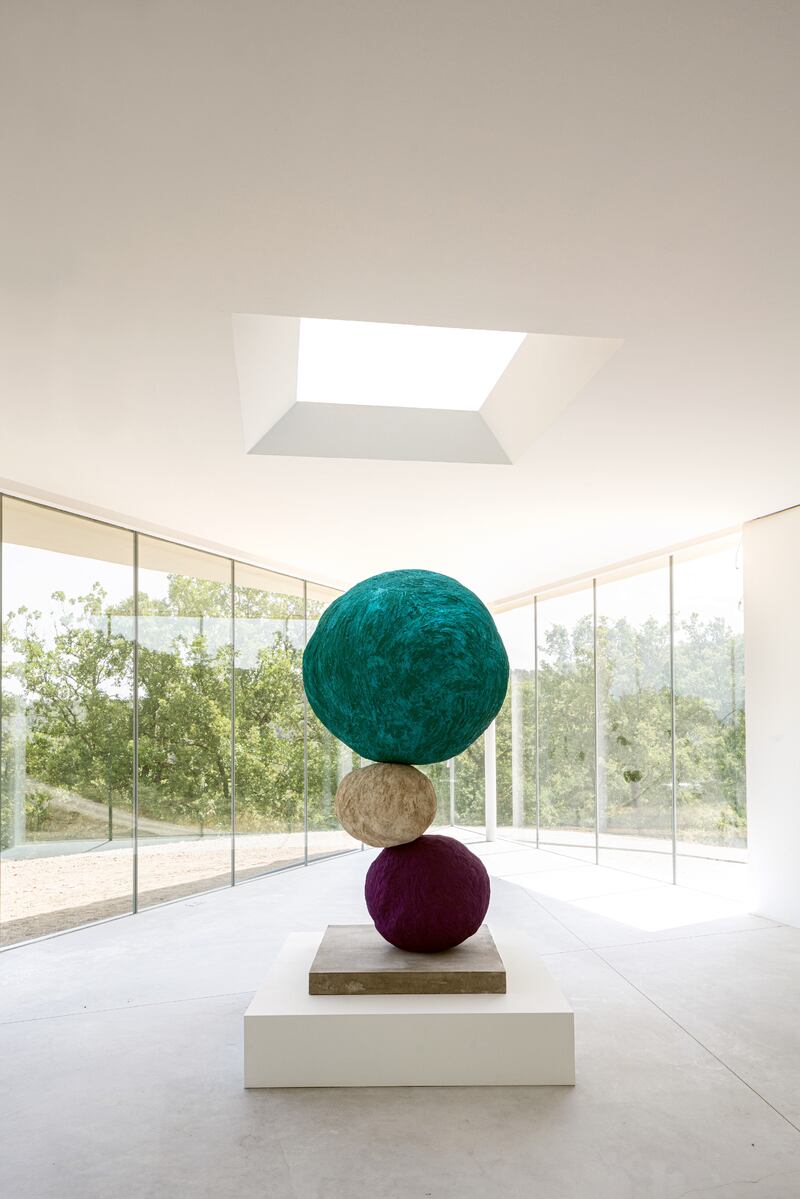
I ask McKillen how many hotels he owns. He pauses to count and concludes there are 23, in South America, Europe and Far East Asia. I ask about the size of his fortune. “I honestly don’t know,” he replies. “Money is not my driver. I never wanted to be called a wealthy person.” In 2016, this newspaper estimated his wealth at €3.5 billion.
For his contribution to the arts, the French government made the Belfast man an officer of arts and letters. Ulster University gave him an honorary doctorate last summer.
McKillen remains bitter over his treatment at the hands of Nama, the Irish State agency set up to deal with bad loans in the wake of the 2008 financial crash. He describes the actions of Nama and the Department of Finance at the time as “disgusting, brutal and misguided”.
I got out of the frying pan into the fire with the Qataris. They’re worse than the Barclay brothers
His only mistake, he says, was to have supported Irish banks abroad. When Anglo-Irish Bank collapsed, “I said, ‘Hold on. I didn’t participate in this mess. I have no dodgy investments.’ The guy in Nama said, ‘That’s why we want you. We need you to support the bad guys’. So I fought like a tiger. The government came at me with a vengeance, a very bitter fight. I went to the Supreme Court ... and I won, seven judges to zero.”
Nama sold McKillen’s debt in London hotels to the Barclay brothers, David and Frederick. McKillen spent £50 million in legal fees to regain control of the hotels. “I wore them down,” he says. “They eventually said, ‘Hey where are you coming from? How are you still standing? We want outta here’.”
Members of the Qatari royal family stepped in as so-called white knights. “I got out of the frying pan into the fire with the Qataris. They’re worse than the Barclay brothers,” McKillen says. A legal fight continues over the valuation of McKillen’s stake in Claridge’s, the Connaught and Berkeley hotels.
I am 100 per cent Irish. A million per cent Irish. Very, very proud to be Irish
Visiting Château La Coste on weekends has been “a massive relief, a refuge”, during his financial battles, McKillen says.
Despite his bitterness towards Nama and the then government, “I am 100 per cent Irish. A million per cent Irish. Very, very proud to be Irish,” McKillen says. He is at the same time alarmed by the British government’s nonchalant attitude to the possible recreation of a Border in Ireland if it renounces the Northern Ireland Protocol, and optimistic that there will be a united Ireland soon. “Moderate Protestants in the North will definitely vote to be part of Ireland, to be part of Europe,” he says.
McKillen sees Brexit as a colossal error that nonetheless had the positive effect of dramatically increasing trade between North and South, and hastening reunification. Much as he dislikes the former British prime minister, “I think Boris Johnson single-handedly did more for a united Ireland than the IRA in 40 years. He did more in one fell swoop, in one decision. I cannot wait for the day.”




















